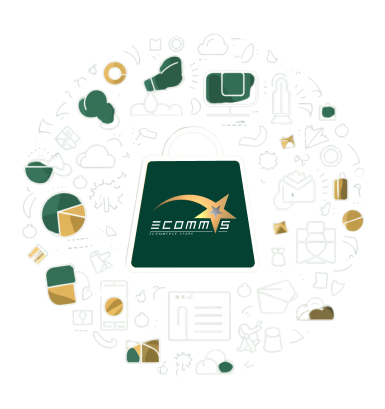Effective Amazon product research is crucial for sellers looking to succeed in the competitive e-commerce landscape. Whether you’re a new seller or an experienced one looking to optimize your listings, understanding how to identify profitable products can significantly impact your success. This detailed guide will explore key strategies and tools for conducting comprehensive product research on Amazon.
Table of Contents
ToggleWhy Product Research is Important
Before diving into product research methods, it’s essential to understand why it matters. Proper product research helps you to:
- Identify Market Demand: Knowing what products are in demand allows you to focus your efforts on items more likely to sell.
- Understand Competition: Analyzing competitors can help you identify gaps in the market or areas where you can offer a better value.
- Optimize Pricing Strategies: By understanding pricing trends, you can set competitive prices that attract customers while ensuring profitability.
- Enhance Marketing Efforts: Knowing your target audience enables you to tailor your marketing strategies effectively.
Steps for Conducting Amazon Product Research
1. Define Your Niche
Identifying a specific niche is the first step in your product research journey. A well-defined niche helps you focus your research efforts on a target audience. To identify your niche, consider:
- Your Interests and Expertise: What products do you know?
- Market Trends: Use tools like Google Trends to see what products are gaining popularity.
- Demand Validation: Check out the best-seller lists on Amazon to see which categories are performing well.
For more detailed guidance on niche selection, you might find it helpful to read How to Launch a New Product on Amazon: 10 Proven Ways.
2. Utilize Amazon Best Sellers and Movers & Shakers
Amazon’s Best Sellers and Movers & Shakers lists are invaluable resources for product research. These lists provide real-time insights into what’s selling well on Amazon.
- Best Sellers: This section shows the most popular products based on sales. Browsing through these categories can help you spot trending items.
- Movers & Shakers: This list highlights products that have seen a significant increase in sales rank over the past 24 hours, indicating rising trends.
3. Leverage Product Research Tools
Consider using specialized tools to streamline your research. One popular tool is Helium 10, which offers various features for product research, keyword tracking, and listing optimization. Check out How to Use Helium 10 for Amazon for a comprehensive overview of this tool.
Some key features of Helium 10 include:
- Black Box: Helps you find high-demand, low-competition products.
- Trendster: Analyzes historical sales data to forecast future trends.
4. Analyze Customer Reviews
Customer reviews provide a goldmine of information. Reviewing reviews lets you identify what customers like and dislike about similar products. This information can help you refine your product offerings or differentiate yourself from competitors.
- Positive Reviews: Look for common themes in positive feedback to understand what features customers value.
- Negative Reviews: Analyze complaints to find areas for improvement. This can help you develop a superior product.
5. Investigate Competitors
Competitor analysis is a crucial aspect of product research. Take time to investigate the top sellers in your niche:
- Product Listings: Analyze their product descriptions, images, and bullet points. Understanding their approach can help you create better listings.
- Pricing Strategies: Observe how competitors price their products and consider how to position your pricing competitively. Refer to How Much to Spend on Amazon PPC for insights on managing your pricing effectively.
6. Keyword Research
Conducting keyword research helps you identify the terms and phrases that potential customers are searching for. Use tools like Amazon’s search bar and Google Keyword Planner to discover relevant product keywords.
- Long-Tail Keywords: These are more specific phrases that often have lower competition. For example, instead of just “kitchen gadgets,” consider “best kitchen gadgets for small apartments.”
- Incorporate Keywords: Use the identified keywords in your product title, bullet points, and description to improve your visibility in search results.
7. Validate Your Ideas
Before committing to a product, validate your ideas through testing and small-scale launches. You can:
- Run Ads: Use Amazon PPC (Pay-Per-Click) ads to test market interest. Monitor performance metrics to gauge viability.
- Create a Minimum Viable Product (MVP): If applicable, list a simplified version of your product to see how it performs in the market.
To explore strategies for reducing advertising costs, visit How to Reduce ACOS on Amazon: 9 Strategies.
8. Consider Seasonal Trends
Product demand can vary significantly throughout the year. Consider incorporating seasonal trends into your research. Use tools like Google Trends to identify when certain products are most popular.
- Plan Ahead: Plan your inventory accordingly if you notice a product peak during a particular season.
- Diversify Your Offerings: To maintain consistent sales year-round, consider offering products that cater to different seasons or holidays.
9. Engage with Your Audience
Social media and online forums can provide insights into customer preferences and trends. Engage with your audience to gather feedback on potential product ideas. Platforms like Reddit or niche-specific Facebook groups can be helpful.
- Surveys: Conduct surveys to ask potential customers what products they would like to see.
- Feedback Loops: Create social media channels for customers to provide feedback on your products.
10. Monitor Your Performance
Once you have launched your product, continue to monitor its performance. Use Amazon Seller Central to analyze sales data, customer feedback, and advertising metrics.
- Adjust Strategies: Based on performance metrics, adjust your marketing strategies and product offerings as needed.
- Customer Service: Maintain a focus on customer service to enhance your brand reputation and encourage repeat purchases.
You can refer to How to Reinstate Your Amazon Account to learn how to improve your customer interactions further.
Frequently Asked Questions
What do Amazon product researchers do?
Amazon product researchers analyze market trends, customer preferences, and competitor performance to identify profitable products for selling on Amazon. They gather data on sales volume, reviews, and keywords to help sellers make informed decisions about which products to launch or optimize.
How do you conduct product research?
To conduct product research, you can:
- Define your niche.
- Utilize Amazon’s Best Sellers and Movers & Shakers lists.
- Use product research tools like Helium 10.
- Analyze customer reviews to understand preferences and pain points.
- Investigate competitors’ listings and pricing strategies.
- Conduct keyword research to identify popular search terms.
How do I research top-selling products on Amazon?
To research top-selling products on Amazon, you can:
- Browse the Best Sellers and Movers & Shakers sections on Amazon.
- Use tools like Jungle Scout or Helium 10 to analyze sales data.
- Check customer reviews and ratings for insights.
- Look at trending products on social media and search engines.
What research methods does Amazon use?
Amazon employs various research methods, including:
- Data Analytics: Analyzing customer purchase history, search trends, and behaviour patterns.
- A/B Testing: Experimenting with different product listings, prices, and marketing strategies to optimize performance.
- Market Research: Conduct surveys and use third-party data to understand consumer preferences and market trends.
- Machine Learning Algorithms: Utilizing algorithms to predict demand and personalize product recommendations based on user behaviour.
Conclusion
Conducting thorough Amazon product research is fundamental for selling successfully. By following the steps outlined above, you can gain valuable metrics that will guide your product decisions and improve your chances of success. Remember, ongoing research and adaptability are keys to thriving in the dynamic Amazon marketplace.
For additional resources and services to help you grow your Amazon business, explore our offerings at ecommstars.com.







